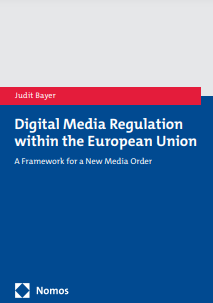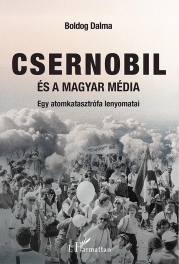Keyword – news media
Egres, Dorottya:
Egres, Dorottya:
The discursive sanctioning of political incivility in the Blanka Nagy case
Blanka Nagy, a high school student spoke up at a protest organised against the Hungarian overtime law in 2018. In her speech, she uttered profanities against the ruling political elite. This paper explores a case of incivility that broke the norms of political communication, while discussing the context-dependency and politically motivated nature of discursive sanctioning. It employs the methodology of frame analysis and studies how the most visited news media outlets and the comments under the news articles shared on social media framed and discursively sanctioned the high schooler and her profanities. Its findings suggest that the positive framing of the incivility can be tied to the addressees of the speech, while the negative framing can be connected to the attributes of the speaker
Keywords: Blanka Nagy, discursive sanctioning, framing, incivility, news media, political communication, profanity, social media
The discursive sanctioning of political incivility in the Blanka Nagy case
Médiakutató Spring 2022 pp. 61-70
Bódi, Jenő – Polyák, Gábor – Urbán, Ágnes:
Bódi, Jenő – Polyák, Gábor – Urbán, Ágnes:
The changing concept of fake news in public service news
In Hungary in 2020, after the emergence of the Covid-19 pandemic, government communication began to accuse critical media of spreading fake news. This typical tool of populist politics has taken on a new colour in Hungary: fake news accusations have also been used against opposition politicians. This analysis looks into content on fake news published over the past decade on Hirado.hu, the news site of the Hungarian public service media. It does not study fake news items that may be published there, but looks into what the concept 26 Bódi Jenő–Polyák Gábor–Urbán Ágnes means in the public discourse on the basis of the articles on Hirado.hu, and how the meaning of the term has evolved over time; for example, whether populist fake news accusations targeting the media and the domestic opposition appeared before 2020.
Keywords: content analysis, fake news, MTVA, news media, populism, public service media
The changing concept of fake news in public service news
Médiakutató Spring 2022 pp. 7-26
Szabó, Krisztián:
Szabó, Krisztián:
Data-driven visual journalism in Hungary
This paper presents the improvements of data-driven visual journalism in Hungary in the past twenty years, comparing it with international trends and tendencies. Data journalism has a three-hundred-years long history in the Anglo-American world. To date, the genre is present in the newsrooms in many countries, including in Hungary, where its practices are lagging behind those of international news sites and papers. To verify the assumption that Hungarian tendencies in data journalism are underdeveloped as opposed to international ones, this paper relies on content analysis and semi-structured interviews. The reasons for underdevelopment lie in the readers’ attitudes, the newsrooms, the Hungarian educational system, the word-centred and visually underdeveloped Hungarian mentality, the unavailability of data and the interaction of all of these aspects. In order to achieve substantial improvement in the genre, fundamental changes must be implemented in both the Hungarian data supply system and the Hungarian mentality in the forthcoming years.
Keywords: chart, data journalism, data visualisation, diagram, infographics, information graphics, news media, visuality
Data-driven visual journalism in Hungary
Médiakutató Summer 2022 pp. 15-34
Gálik, Mihály:
Gálik, Mihály:
Echo chambers and filter bubbles
In the past three decades, both the production of news/information on public matters and the distribution of these to the audience have undergone major changes. The online distribution of news and information has enabled users to personalise their news consumption on the one hand, and allowed for user generated content on the other hand. These two practices have become the recurring topics of mainstream communication research after the millennium. Around the early 2010s and in the Web 2.0 environment, the role of algorithmic filtering introduced by online news platform providers has become another mainstream research topic. Leading academics have also voiced the paradox that the personalisation of online news consumption may reduce the scope and diversity of news consumed by the audiences, the abundance of available news on many online platforms notwithstanding. Yet the findings of most relevant research projects suggest that this concern is highly overstated. Although there are echo chambers and filter bubbles in the contemporary digital networked media scene, these are highly different from the ones outlined by their visionaries.
Keywords: algorithmic filtering, echo chamber, filter bubble, hype, news bubble, news media, online news media, personalization
Echo chambers and filter bubbles
Médiakutató Spring 2020 pp. 27-35



